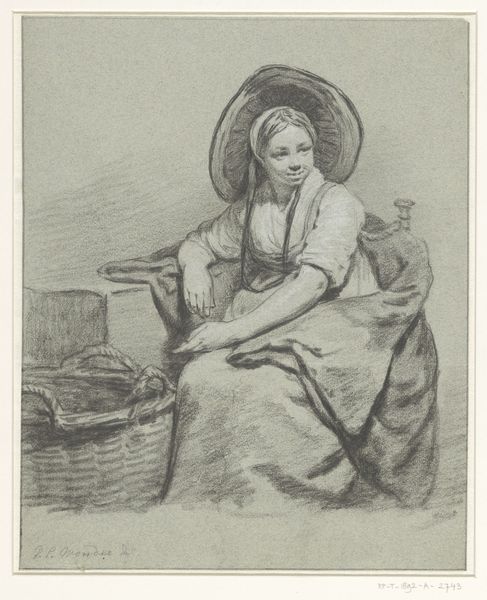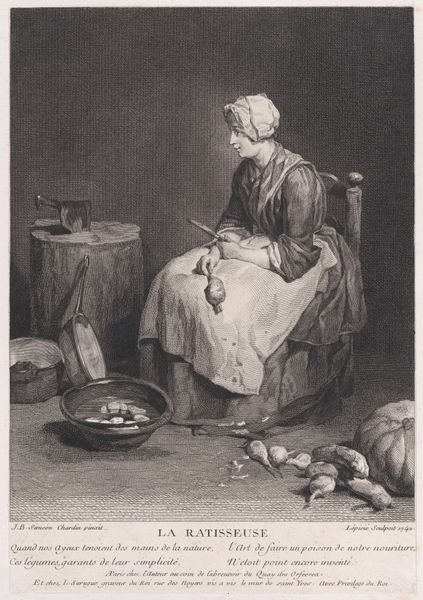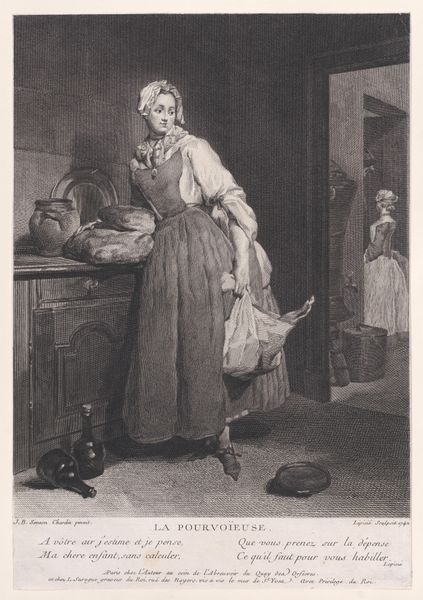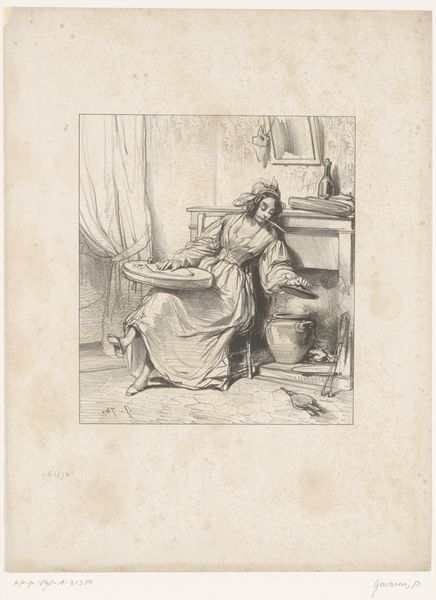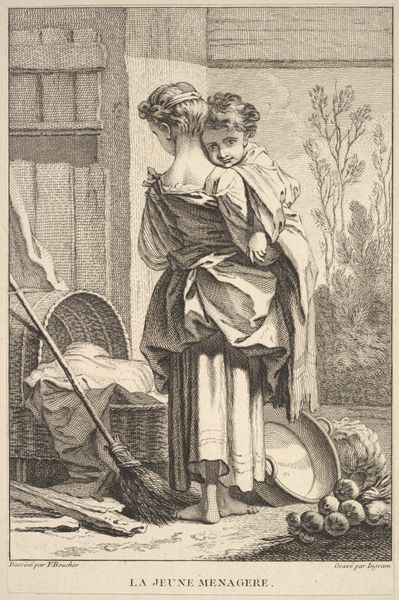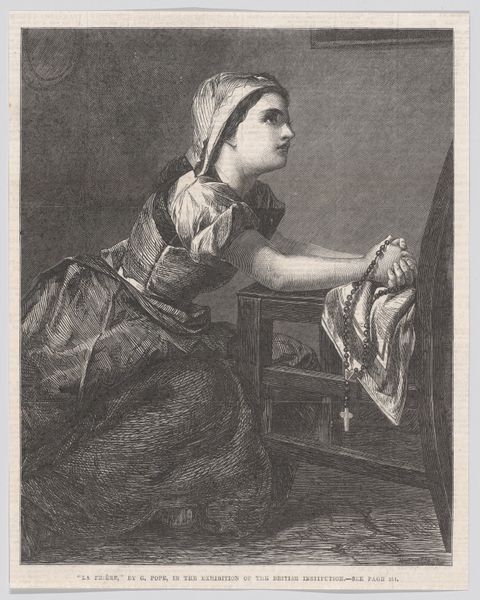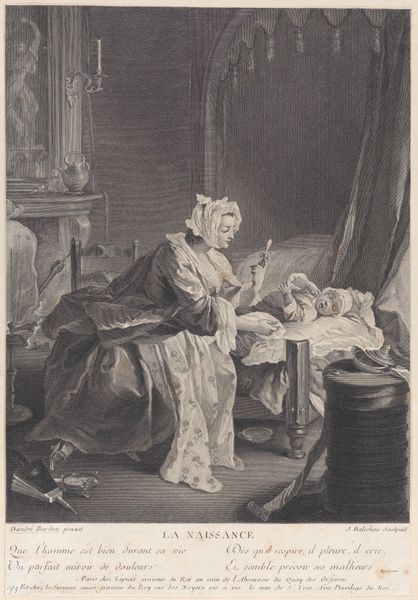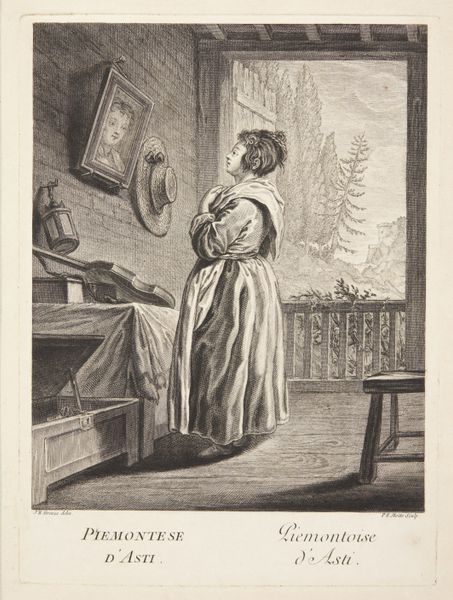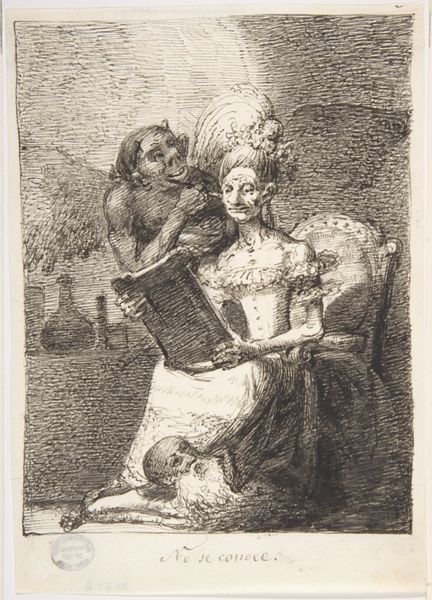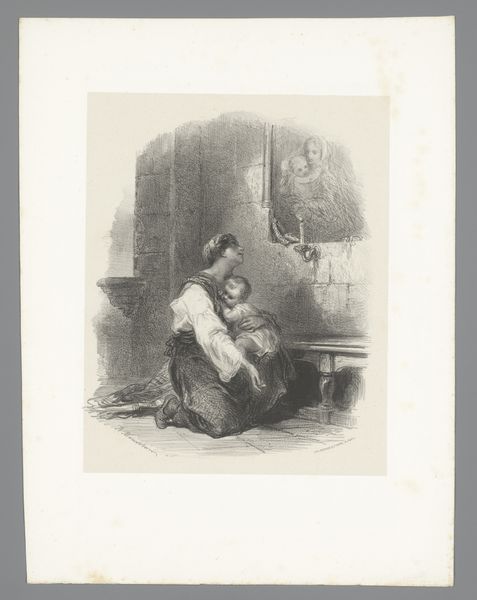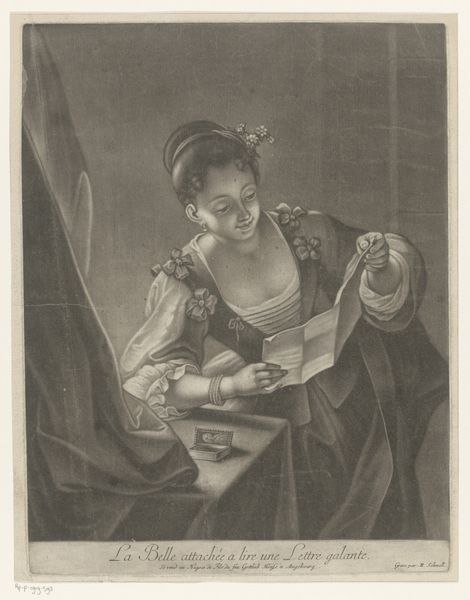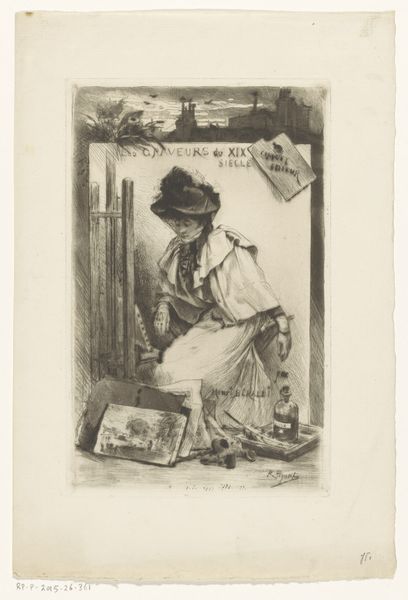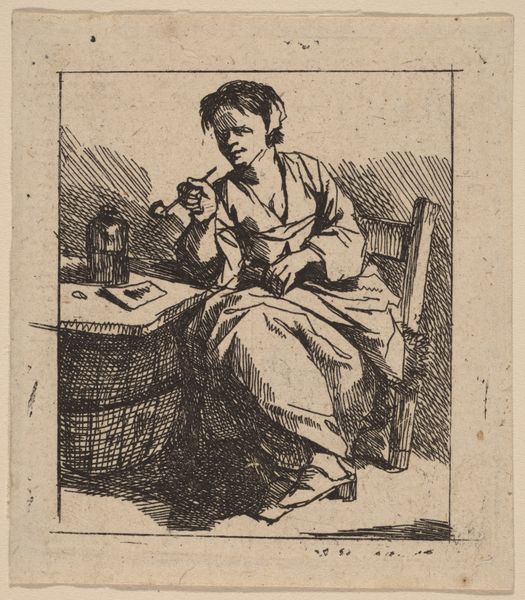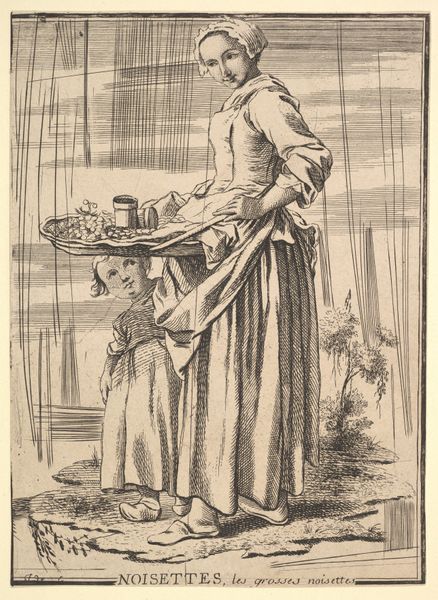
Dimensions: image: 30.5 x 21.2 cm (12 x 8 3/8 in.) sheet: 40.5 x 28.5 cm (15 15/16 x 11 1/4 in.)
Copyright: National Gallery of Art: CC0 1.0
Célestin Nanteuil created this print, Dulcinea del Toboso, using lithography, a process that makes images from a flat stone or metal plate. Look closely, and you will see that the image is composed of countless tiny dots and lines, built up gradually to create areas of tone and shadow. The lithographic technique allowed prints to be made in large numbers, at relatively low cost, helping to democratize image production in the 19th century. This particular print is based on a character from Miguel de Cervantes' novel Don Quixote. Nanteuil has chosen to depict the working class girl feeding chickens. The print medium here is key to our understanding: without lithography, this image would likely not have been made, and it certainly wouldn’t have been so widely distributed. So, next time you look at a print, consider not just the image itself, but also the labor and technology that made its circulation possible. By understanding the making, we can appreciate the wider social context of the artwork.
Comments
No comments
Be the first to comment and join the conversation on the ultimate creative platform.
